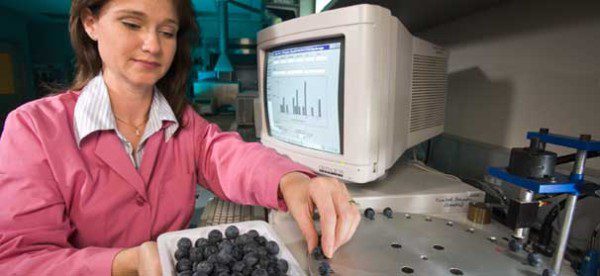
Sep 2, 2011Researchers studying blueberry splitting
USDA researchers and a university colleague have found several factors involved in blueberry splitting, a significant problem that can cause losses of $300 to $500 per acre.
Splitting and cracking occur in southern highbush and rabbiteye blueberries if they receive preharvest rainfall when fully ripe or approaching ripeness, according to scientists with USDA's Agricultural Research Service (ARS).
ARS horticulturist Donna Marshall, retired horticulturist James Spiers and geneticist Stephen Stringer at the ARS Thad Cochran Southern Horticultural Laboratory in Poplarville, Miss., and University of Southern Mississippi associate professor Kenneth Curry collaborated on the research studies published in HortScience.
In the first study, published in 2007, the researchers developed a laboratory method to model rain-related splitting in blueberries. Many blueberry breeders throughout the country are using this method to more vigorously screen cultivars and selections for splitting susceptibility. The results from field and laboratory tests showed that the rabbiteye cultivar Premier has the lowest incidence of splitting, while widely grown cultivar Tifblue exhibited a high incidence of splitting.
Marshall and her colleagues also investigated the correlation between splitting susceptibility and fruit firmness. Laboratory and field tests proved that, in general, firmer fruit has a higher tendency to split. But one selection, named MS614, exhibited extreme firmness and splitting resistance. The results, published in 2008, suggest that breeders who select for firmness may inadvertently also be selecting for splitting. But the laboratory screening method Marshall and colleagues created has helped remedy this problem.
The most recent study, published in 2009, evaluated water-uptake thresholds in split-resistant Premier and split-susceptible Tifblue fruit at all stages of development. The researchers harvested and weighed the fruit, then soaked it in distilled water at room temperature for 24 hours. They found that Premier absorbs more water than Tifblue, yet remains intact and experiences minimal splitting. According to Marshall, the studies show that splitting is a cultivar-specific problem.
By Sharon Durham, Agricultural Research Service














